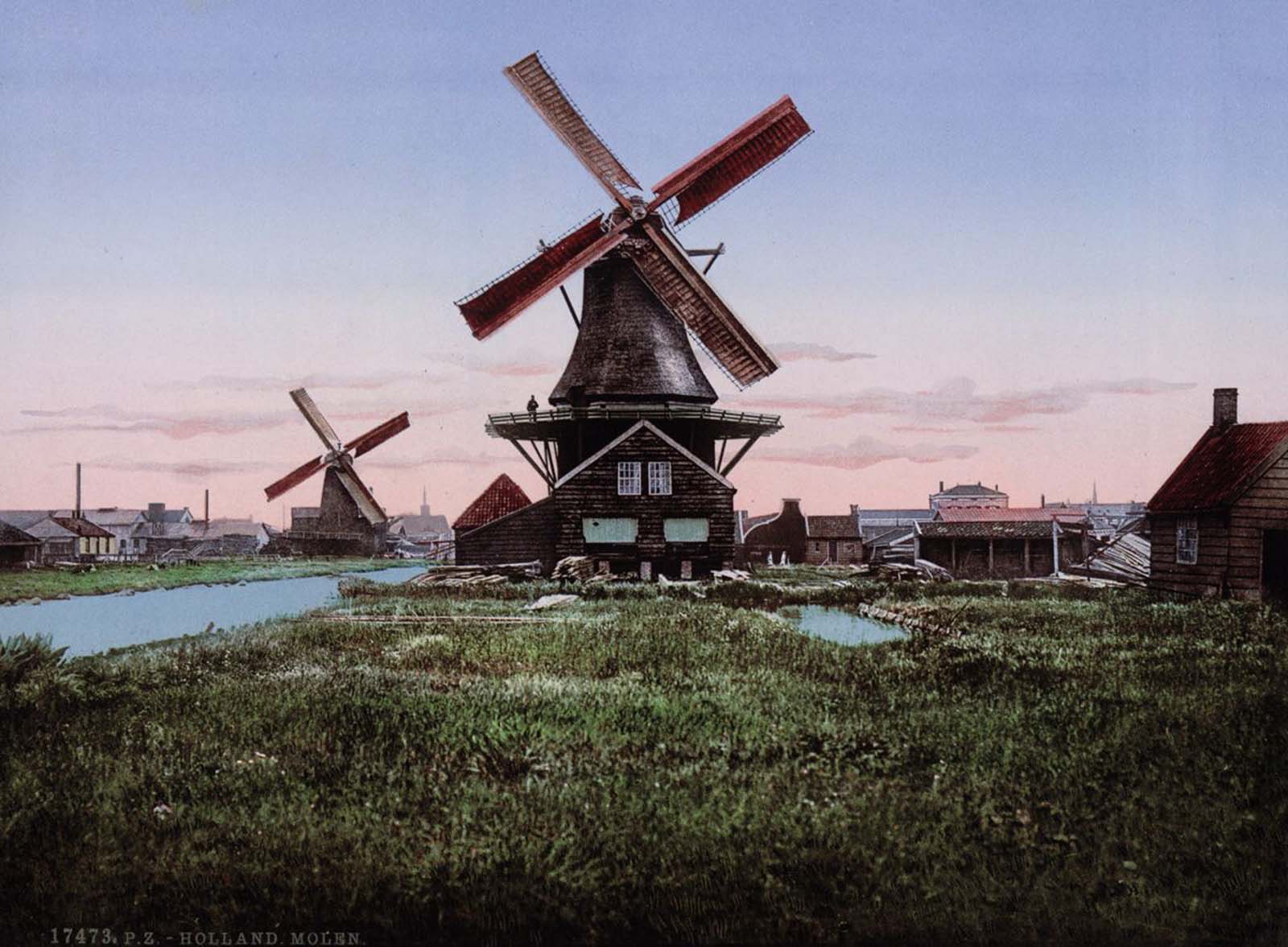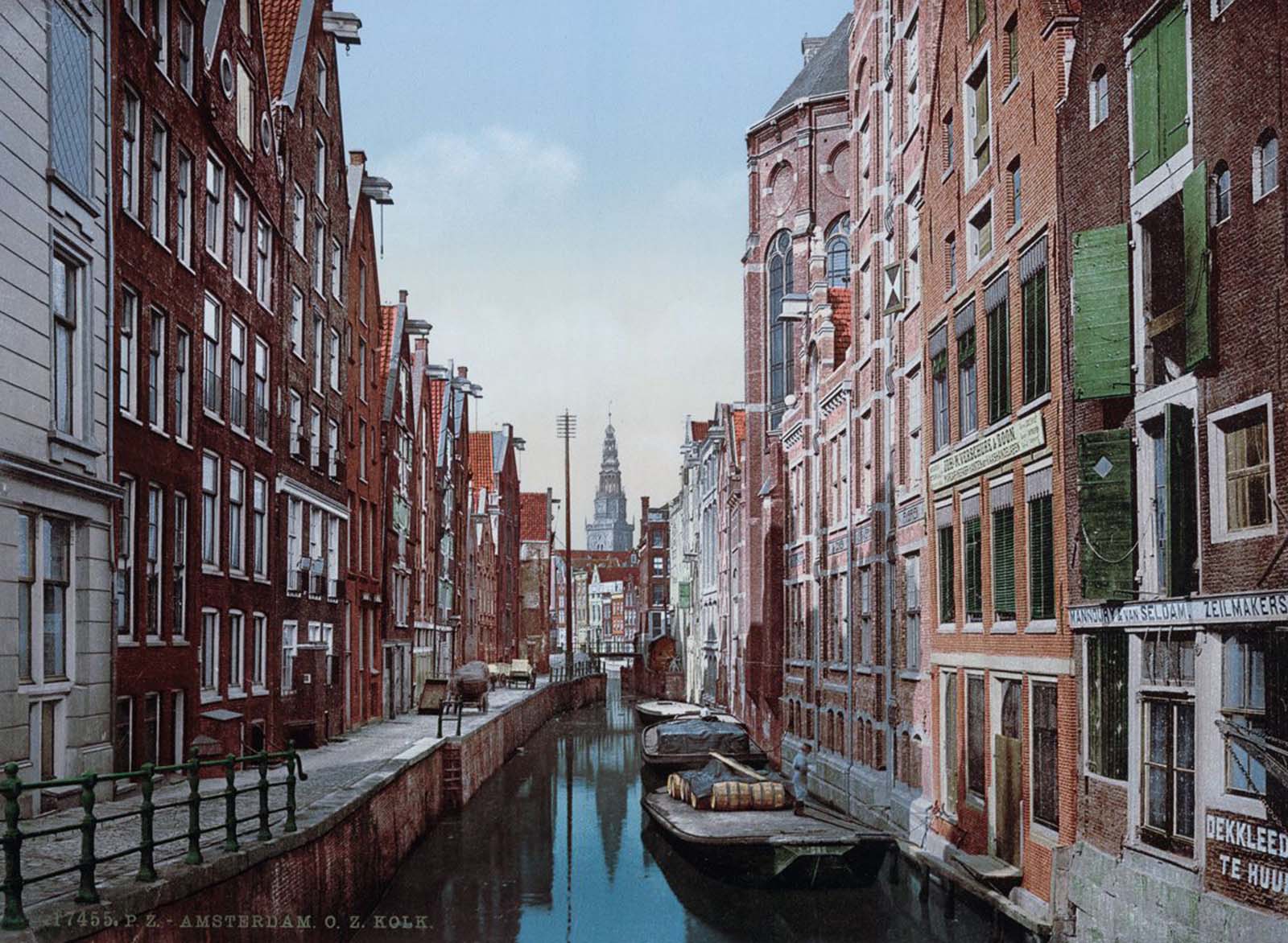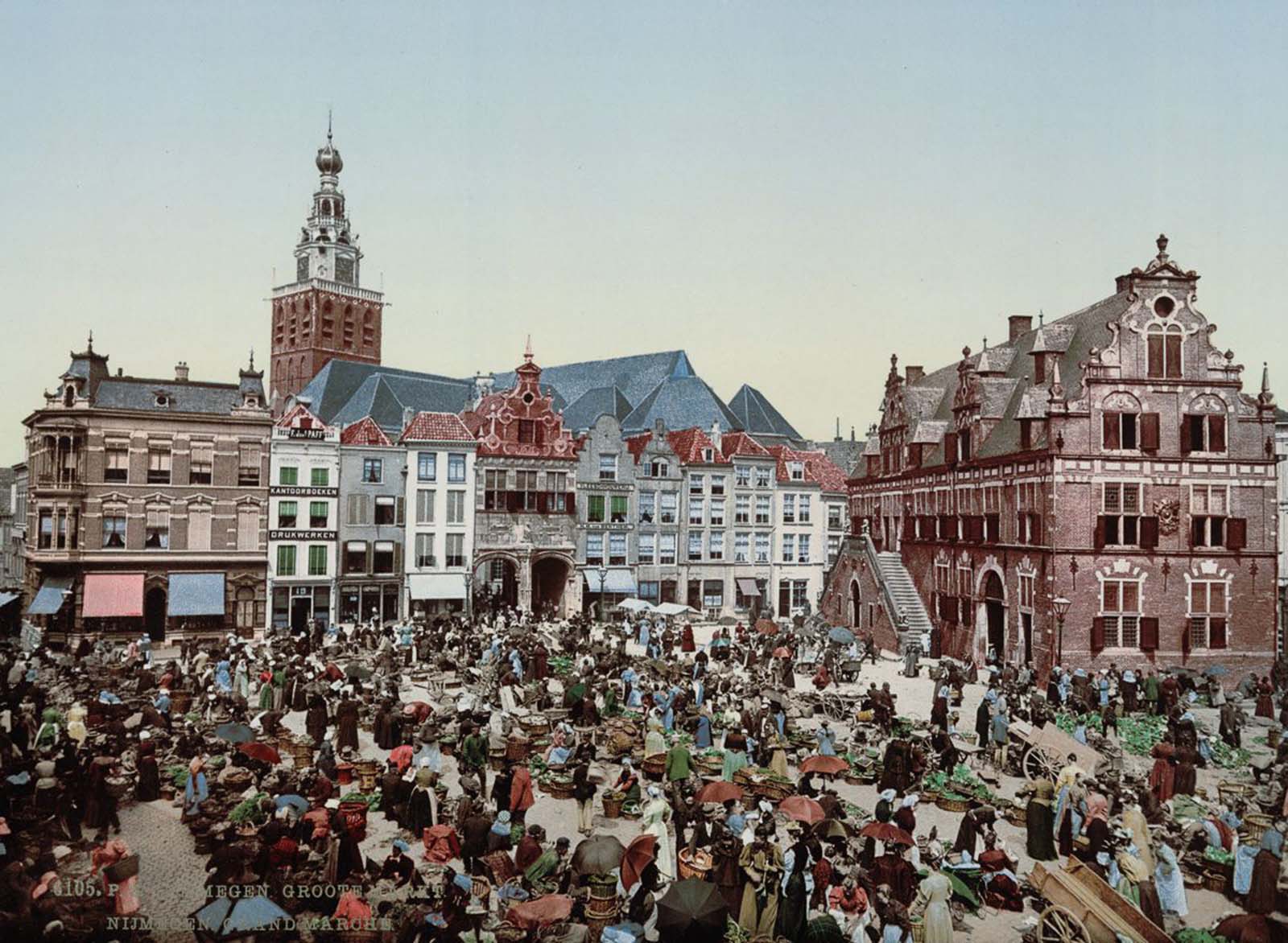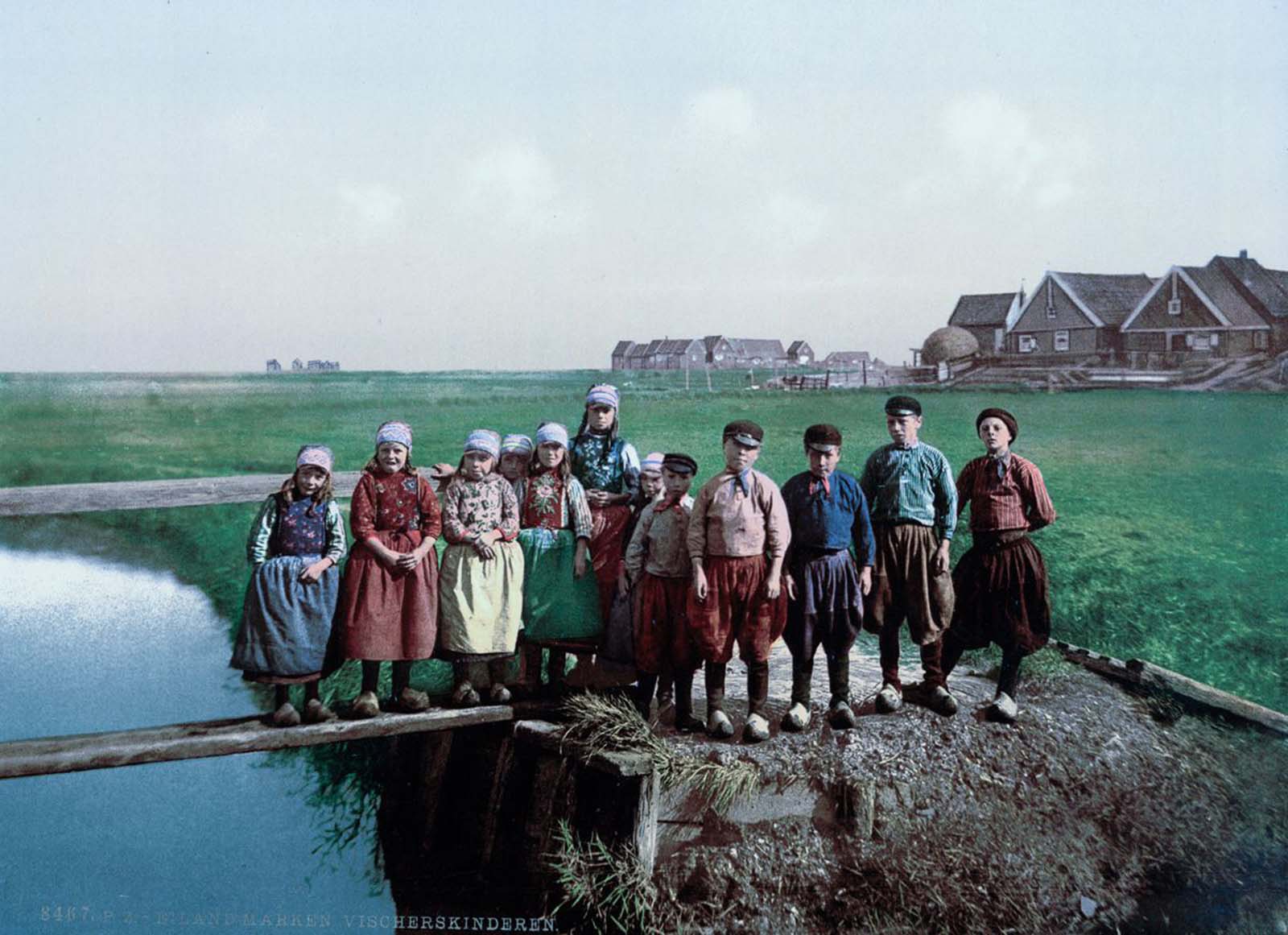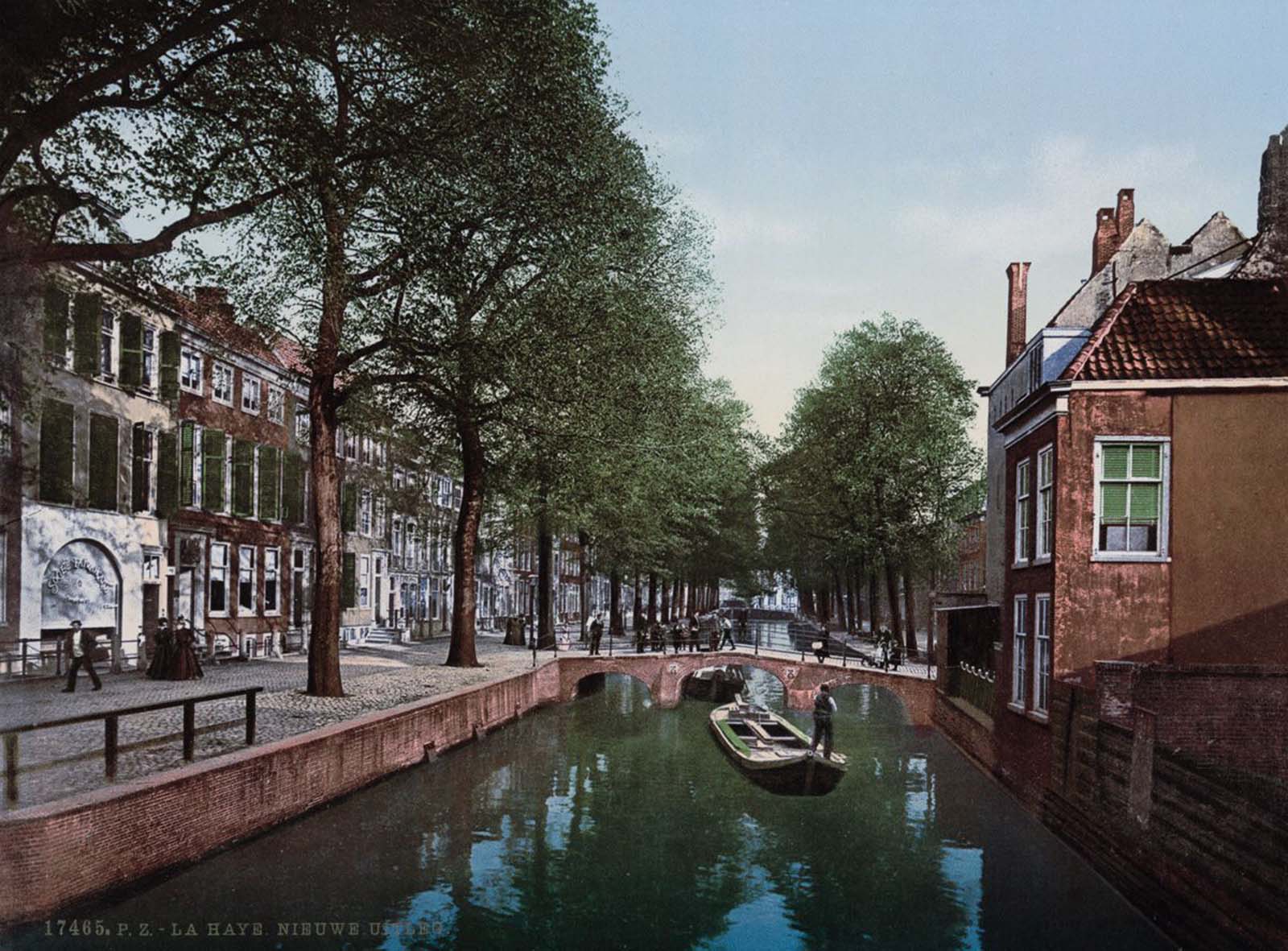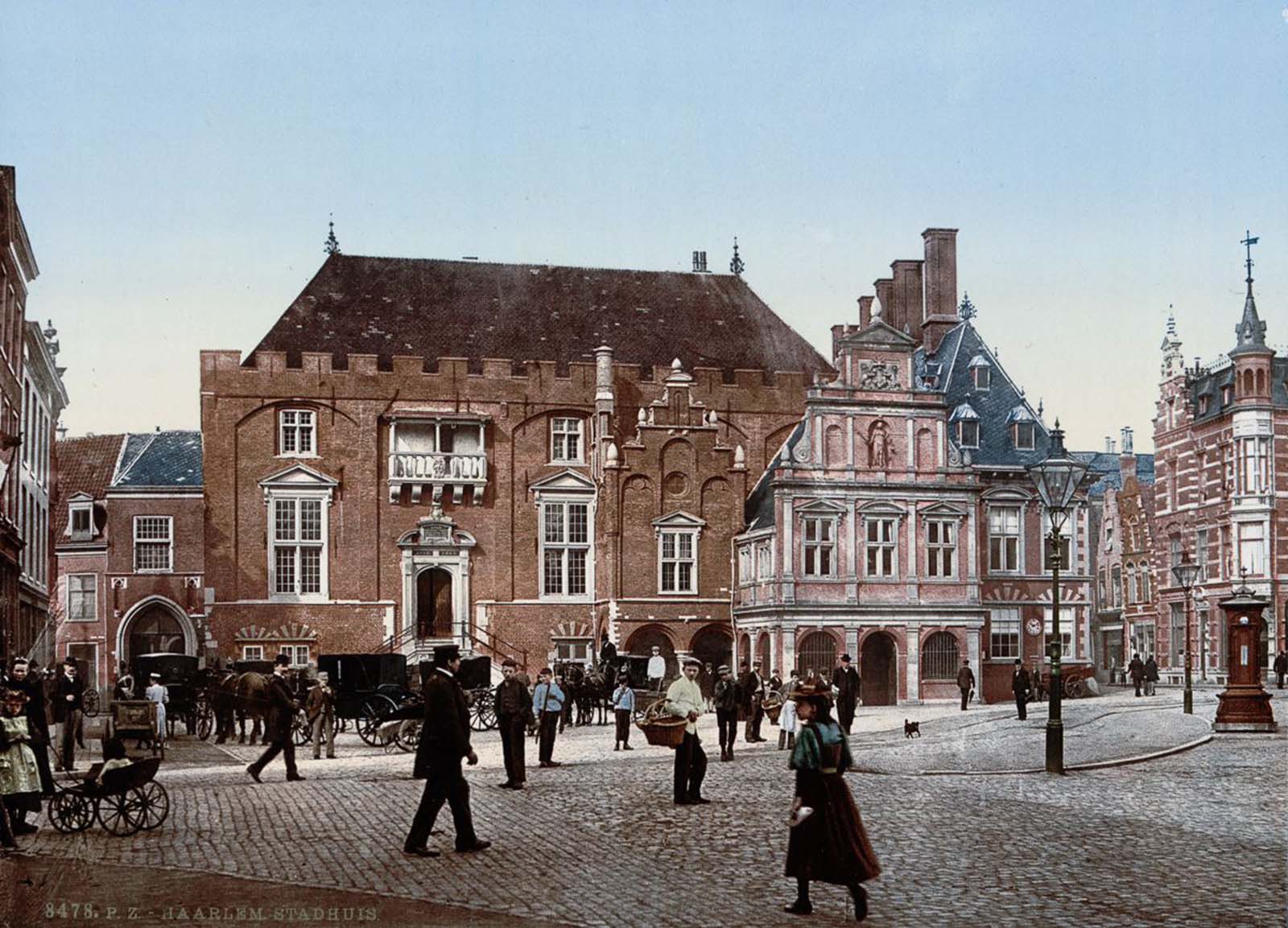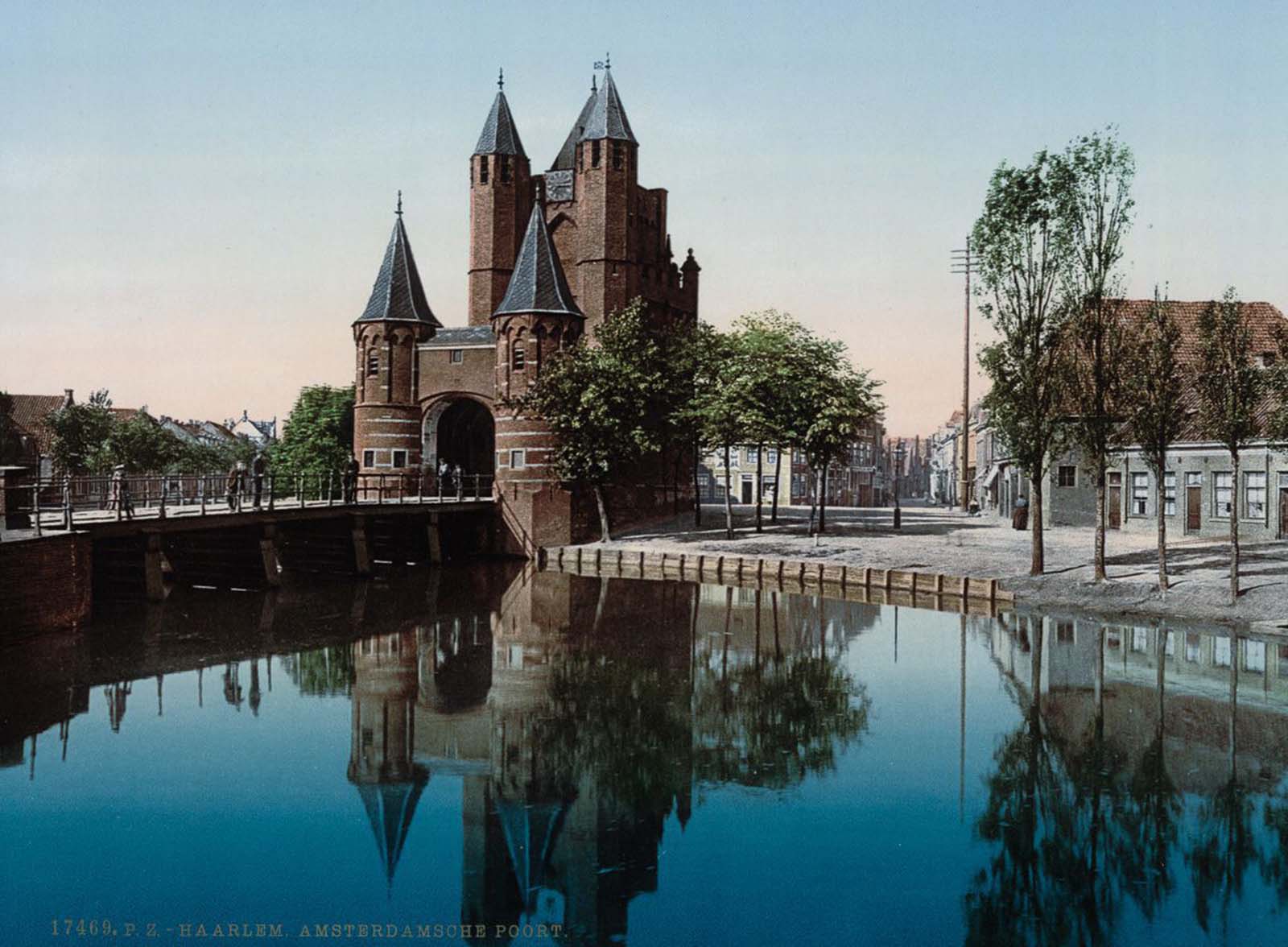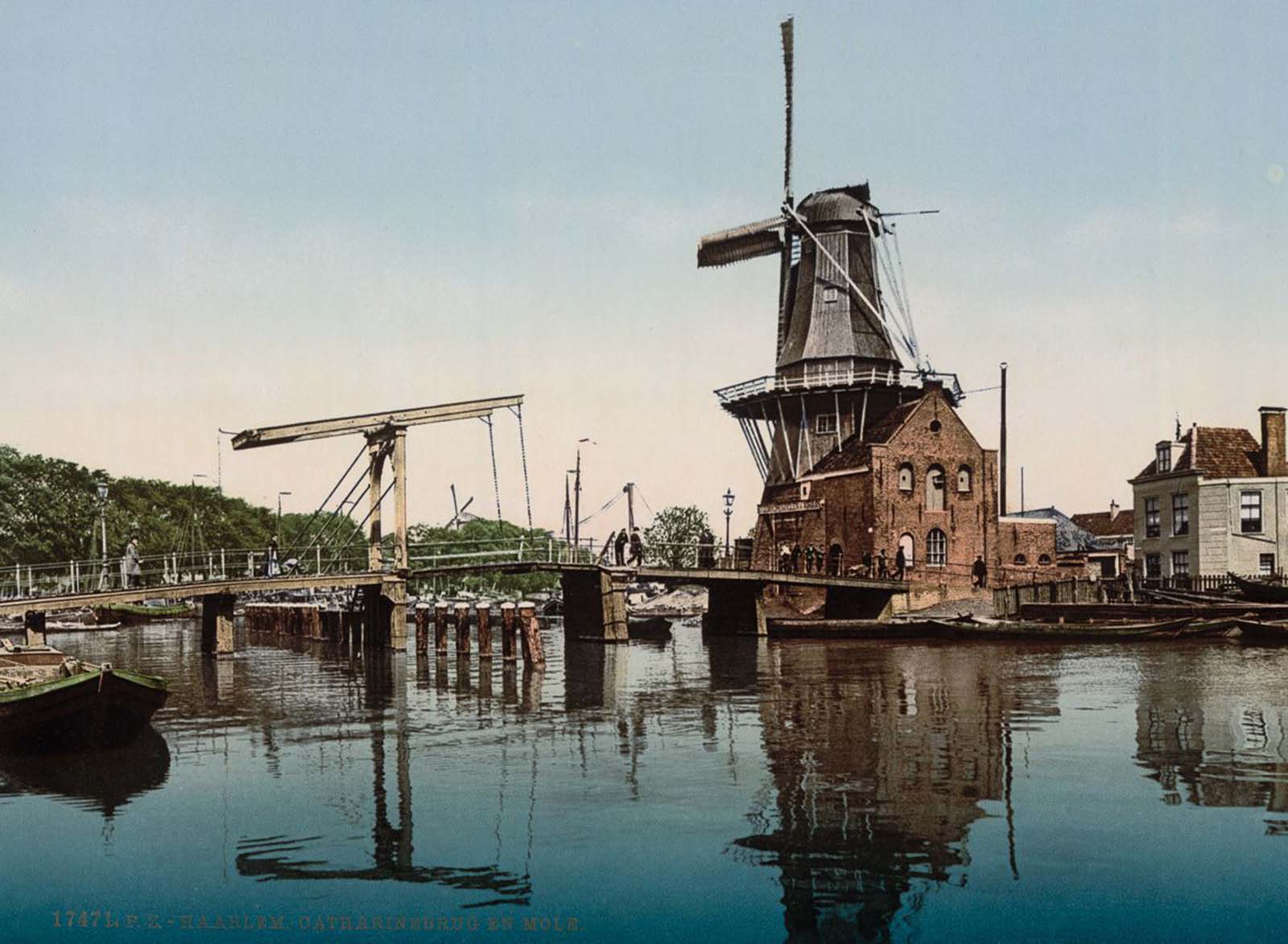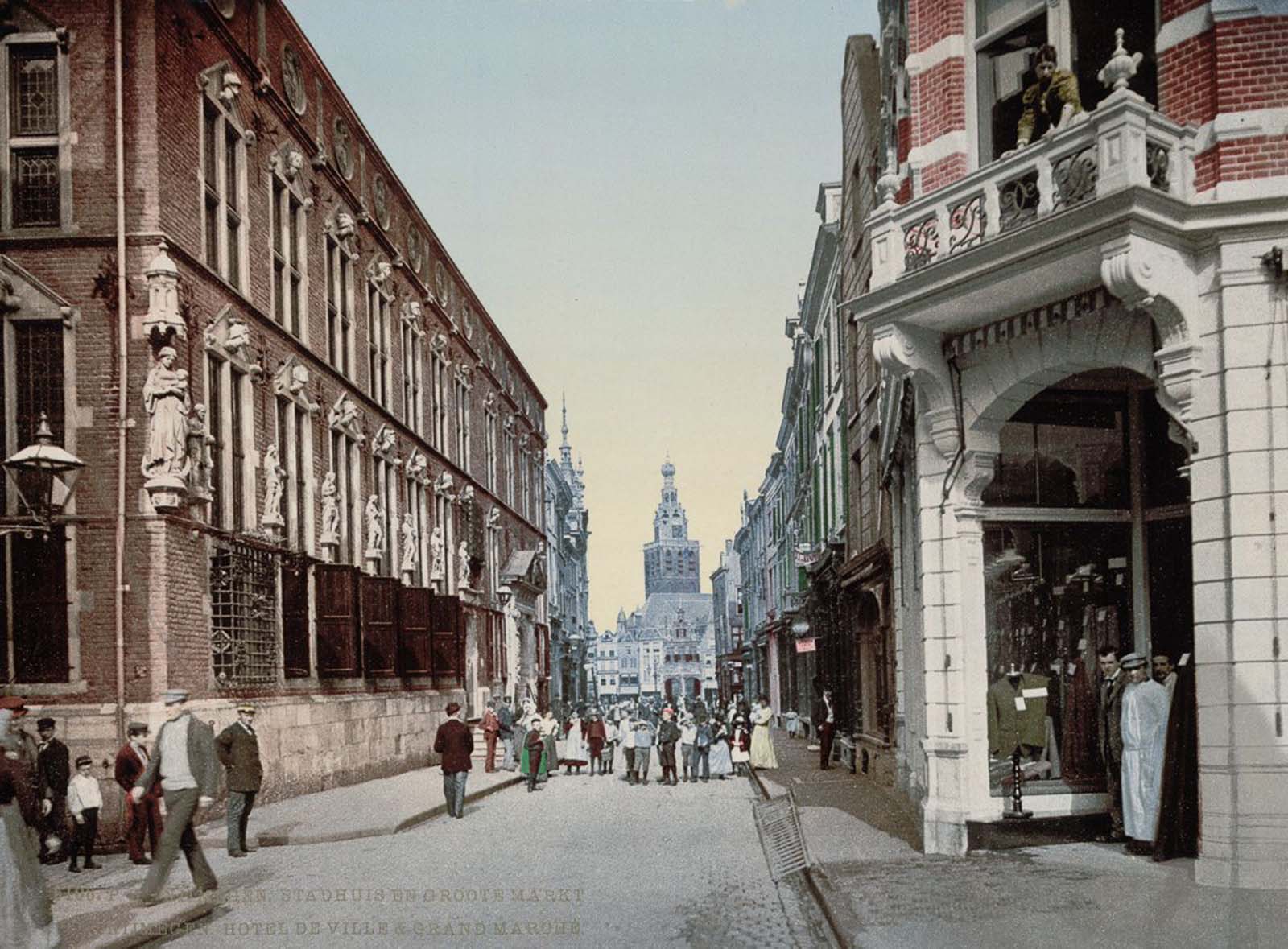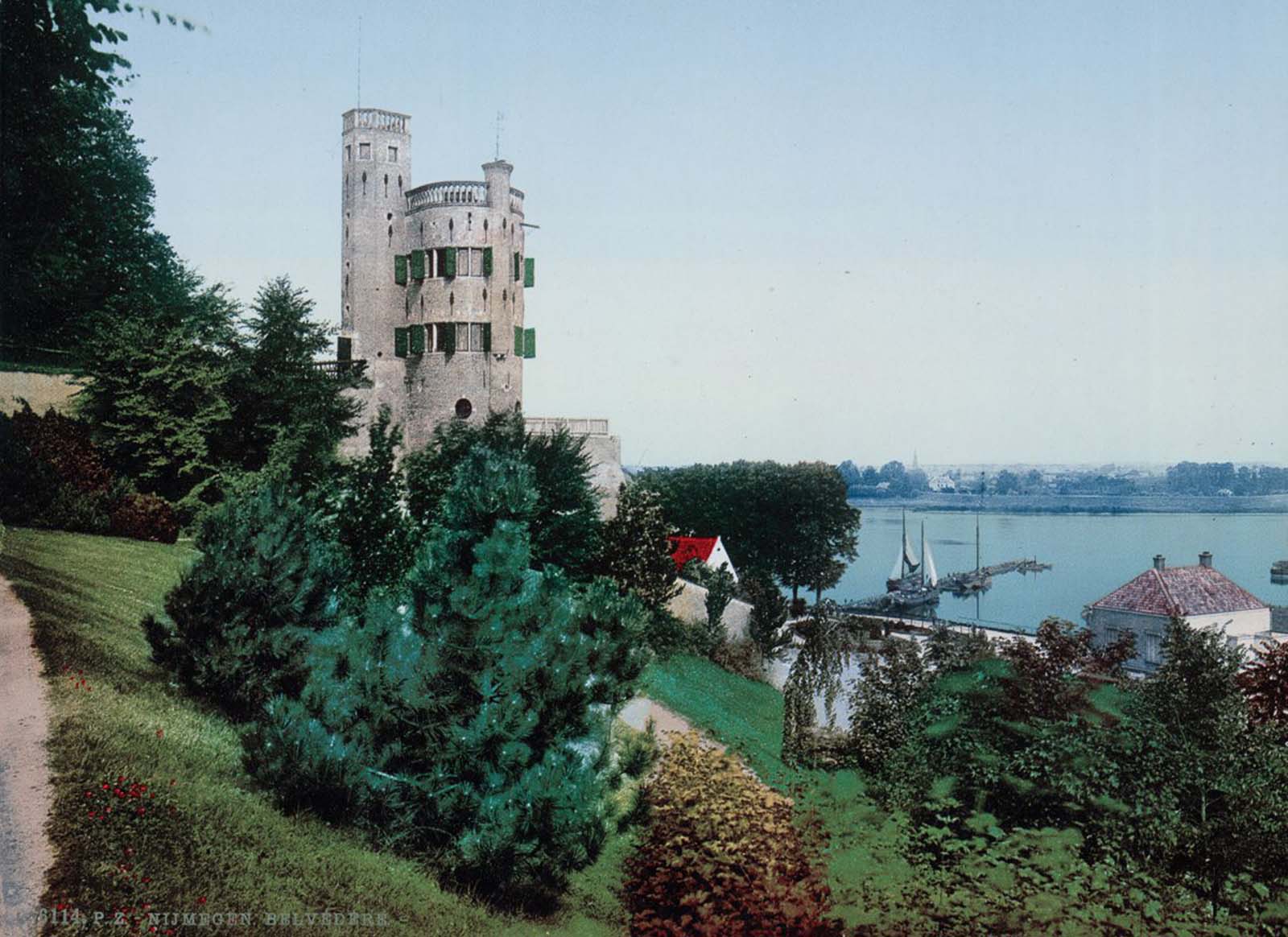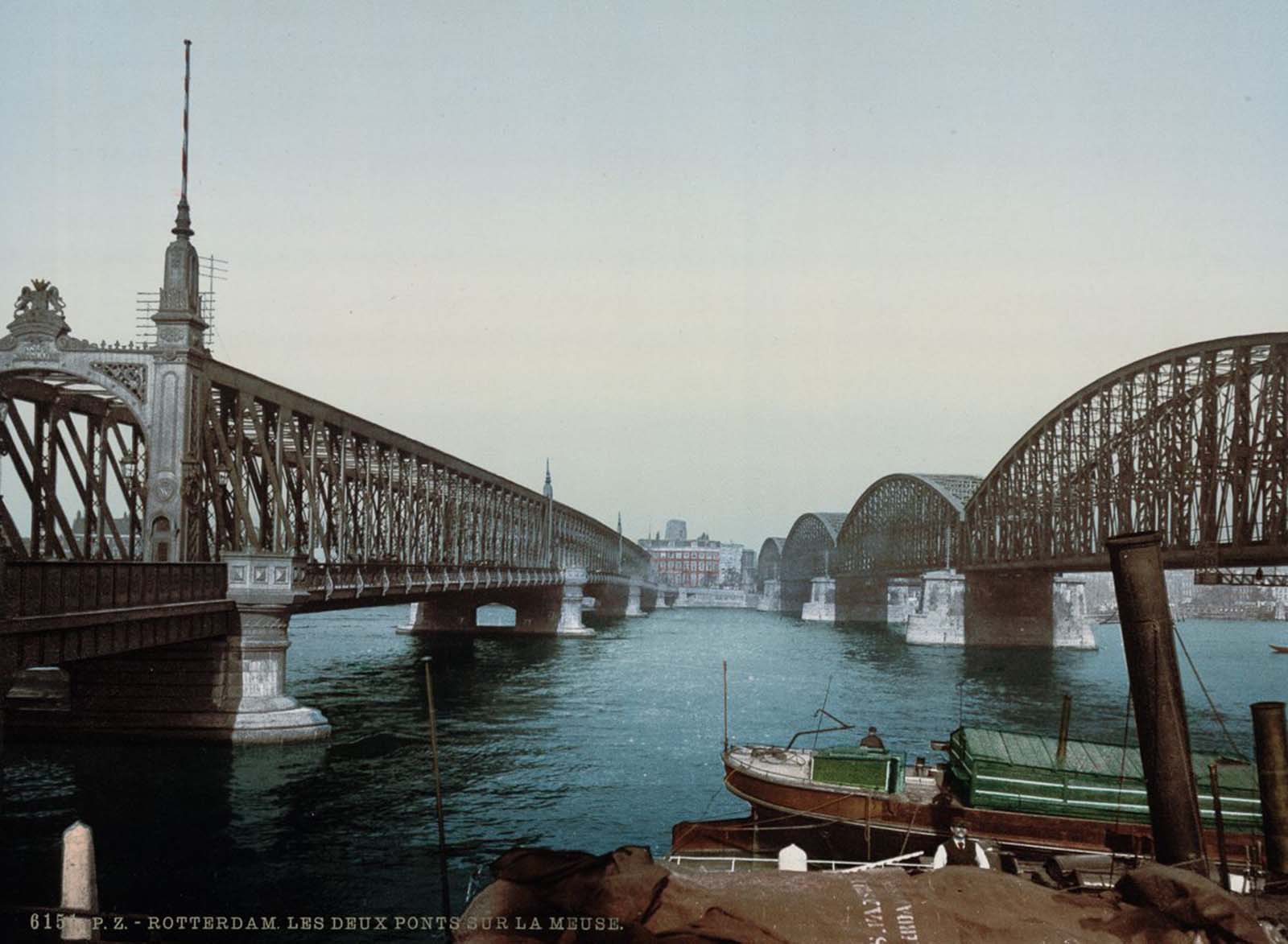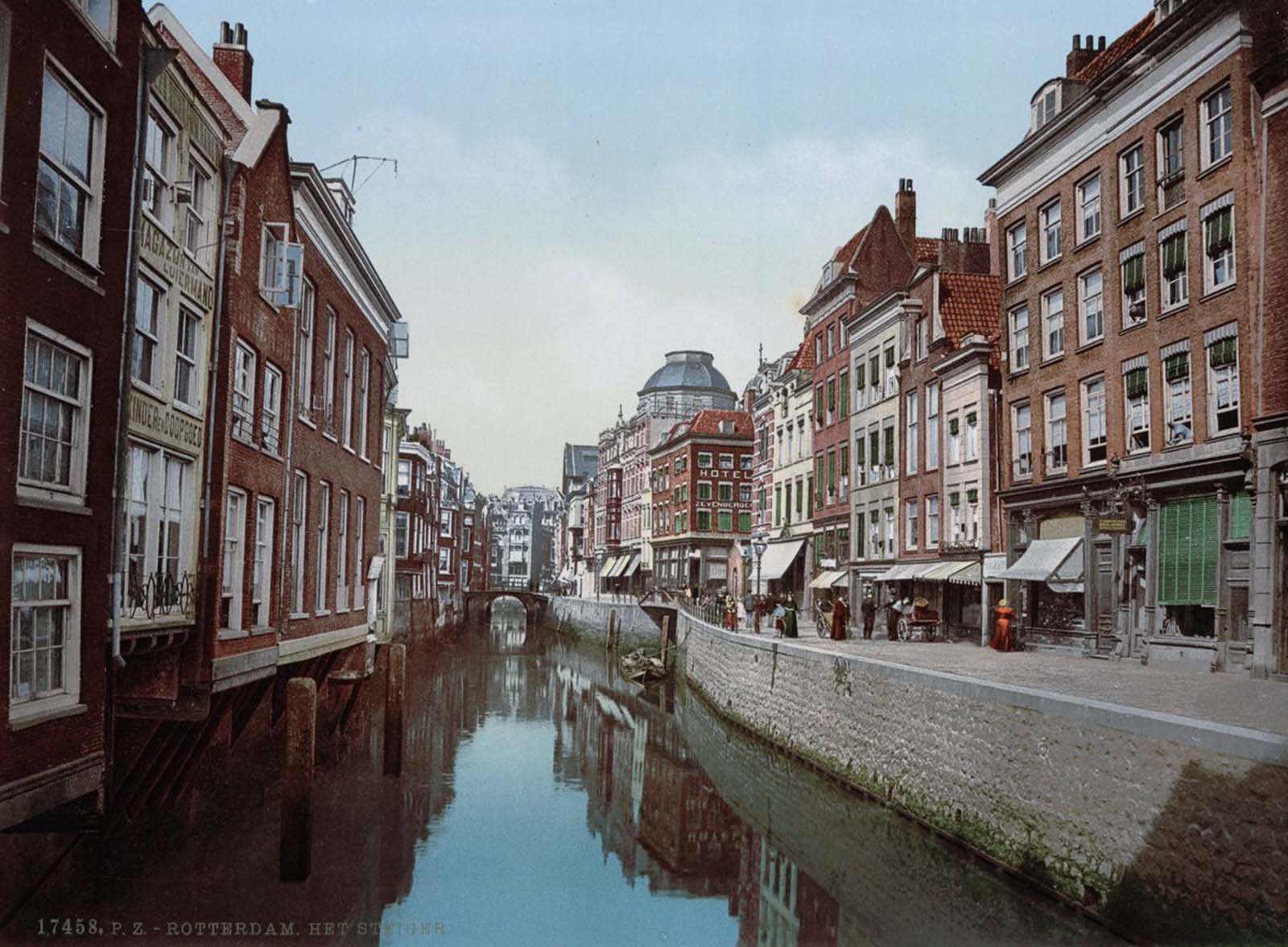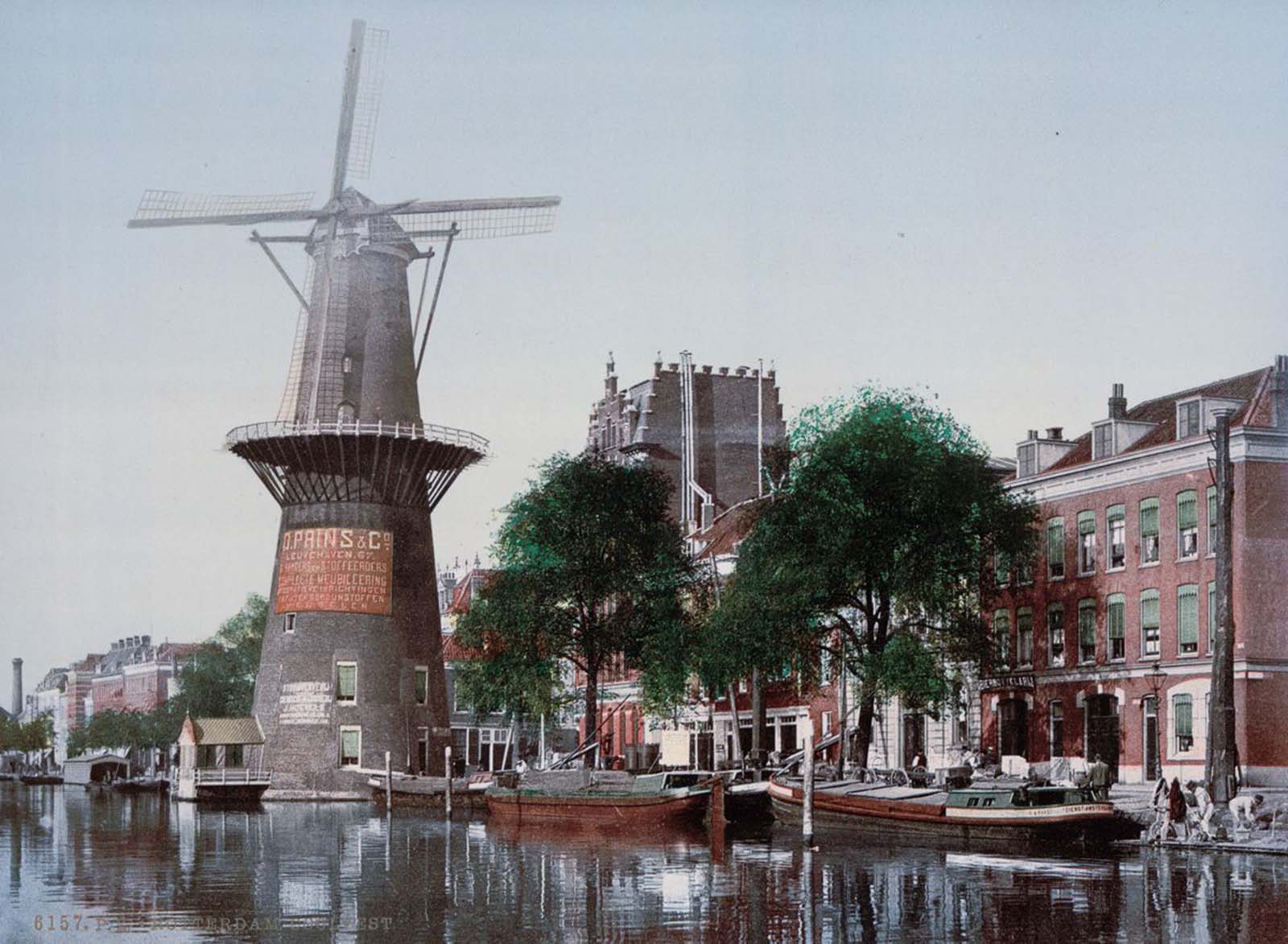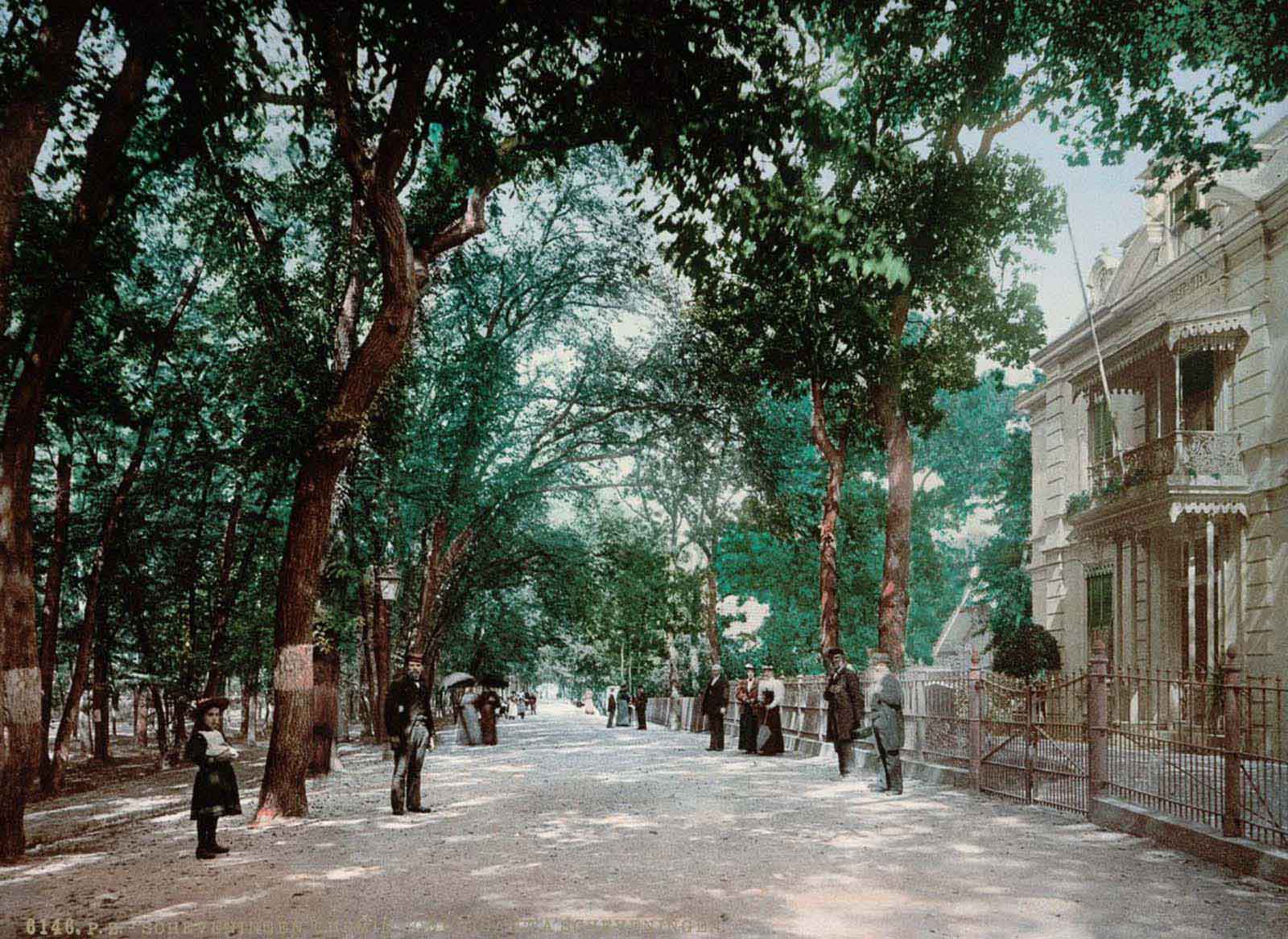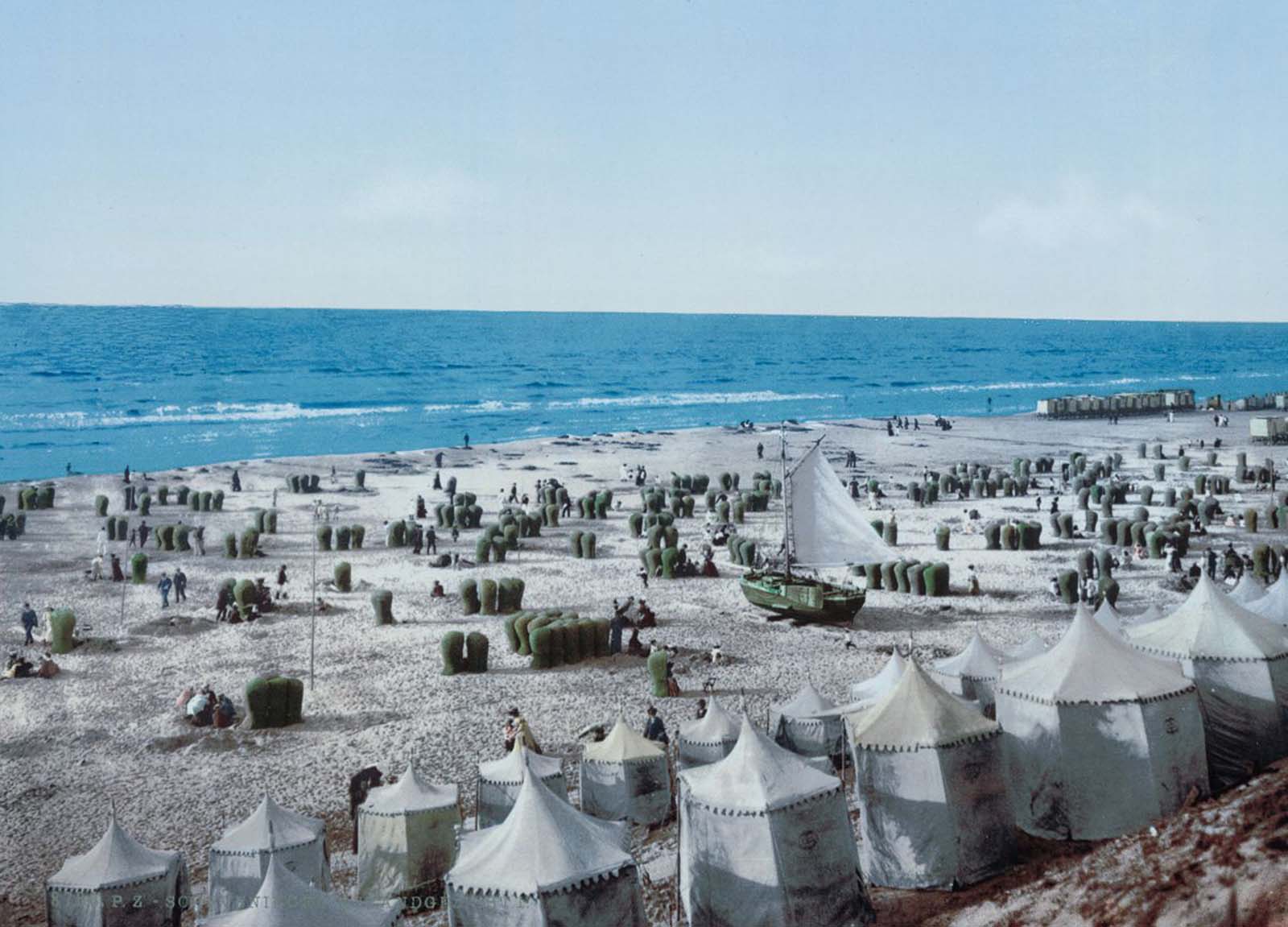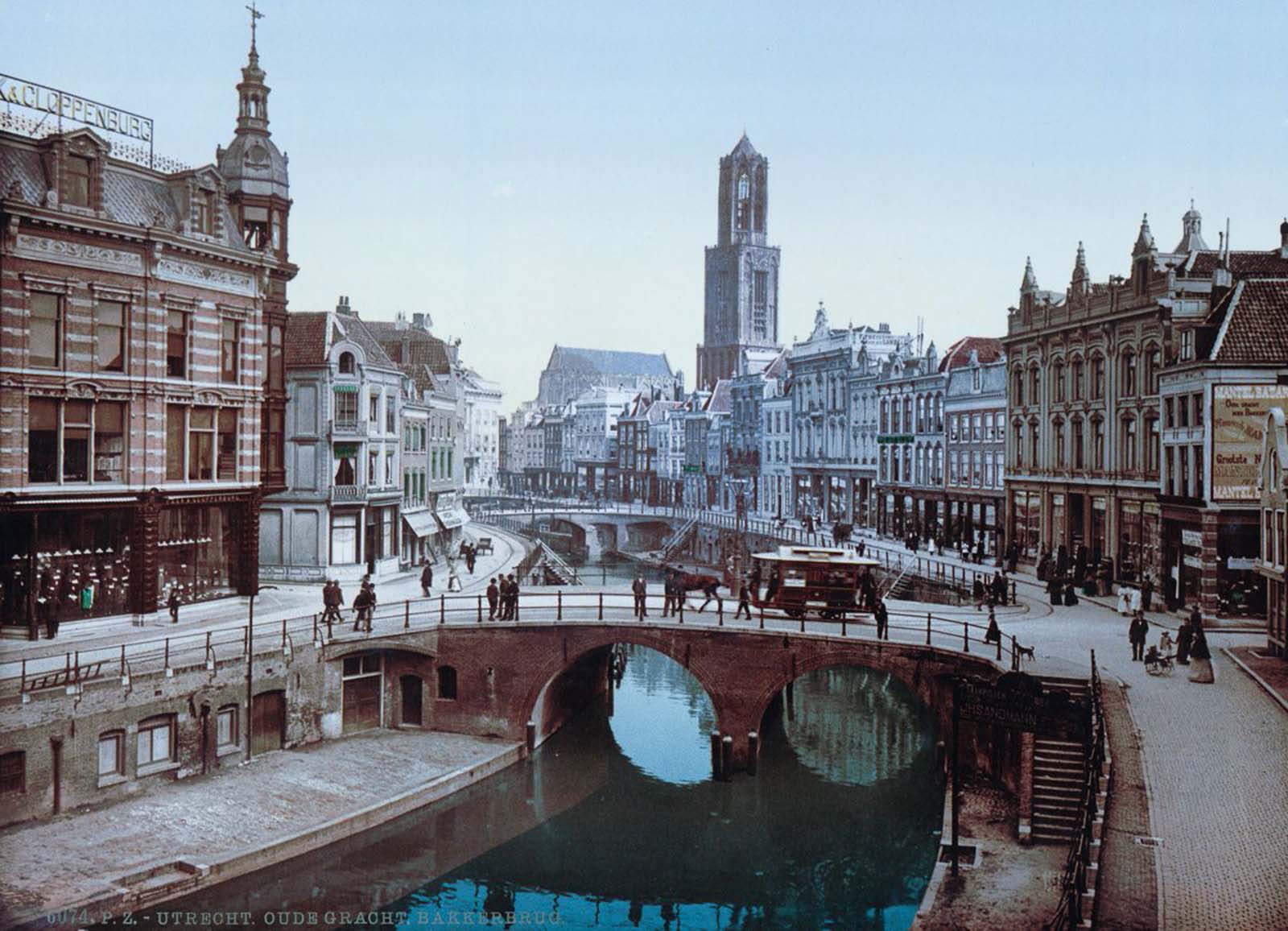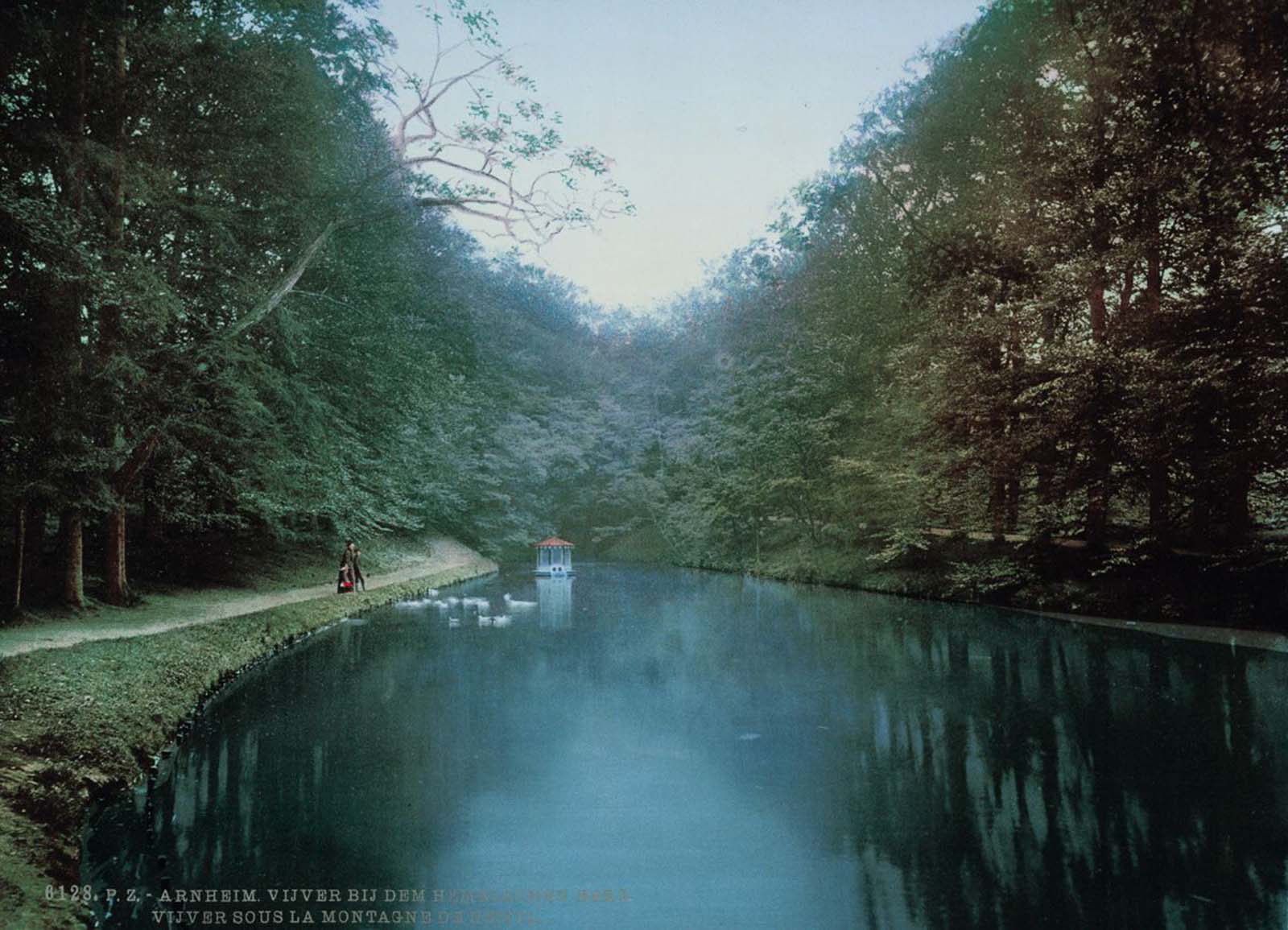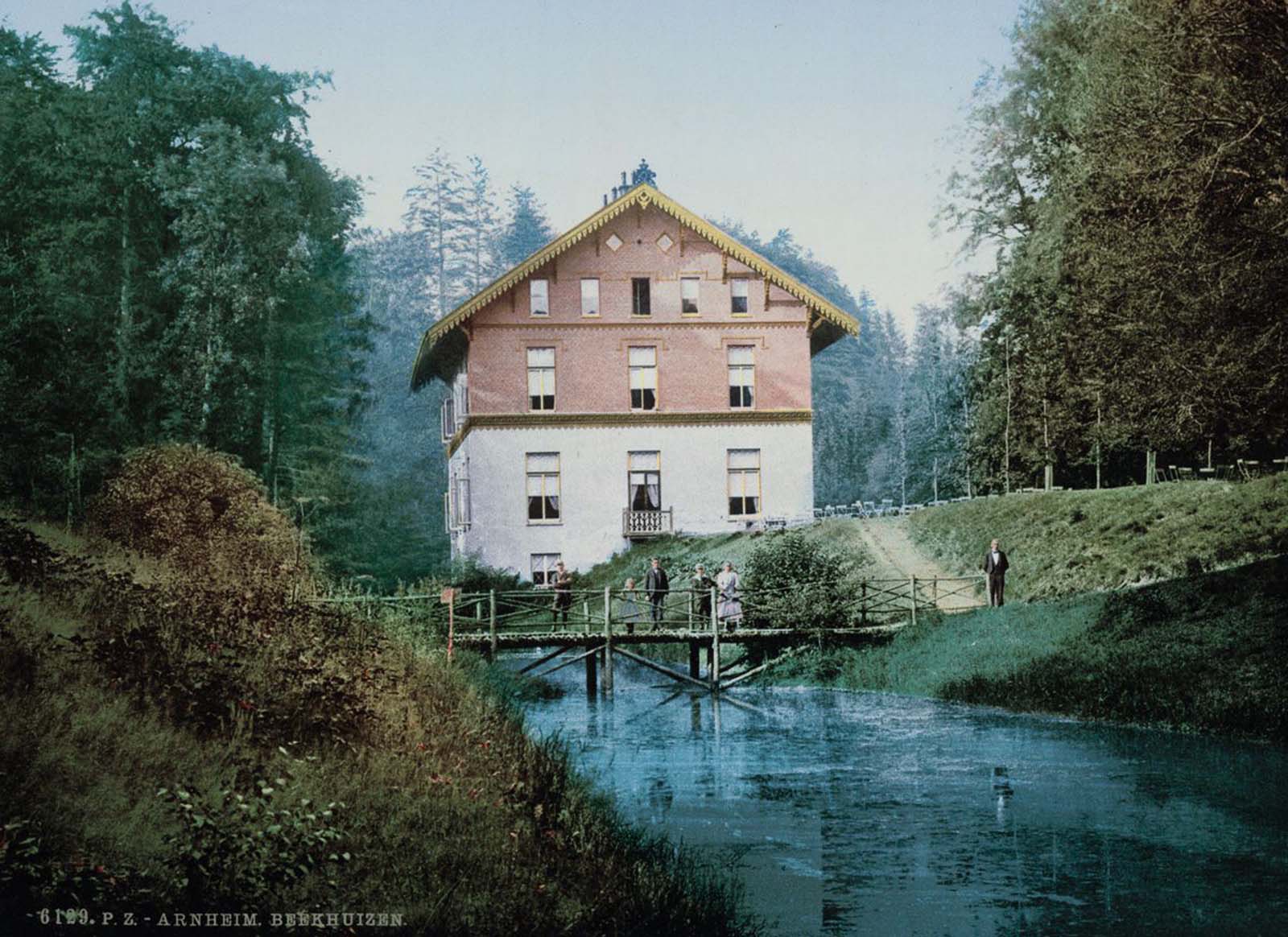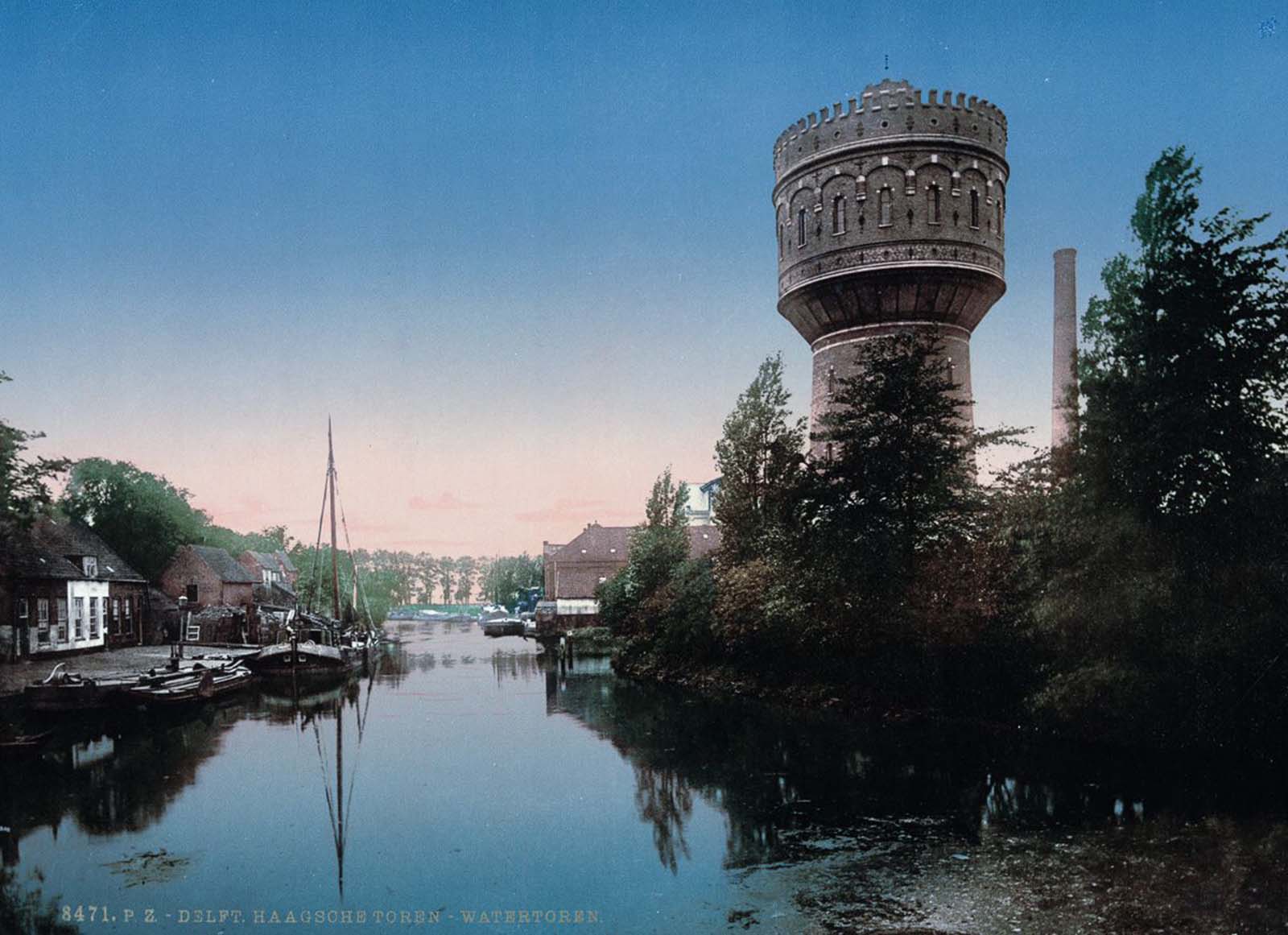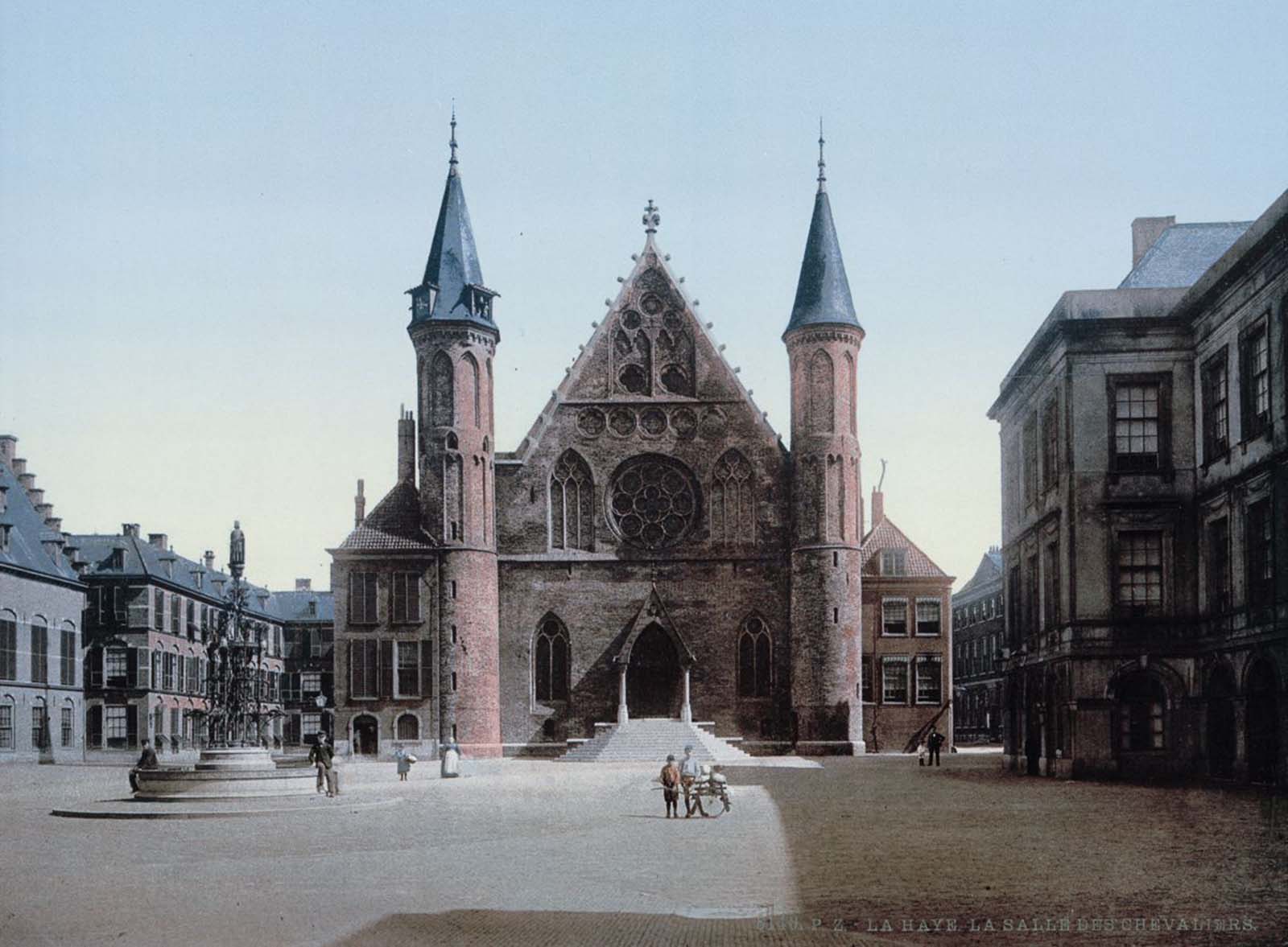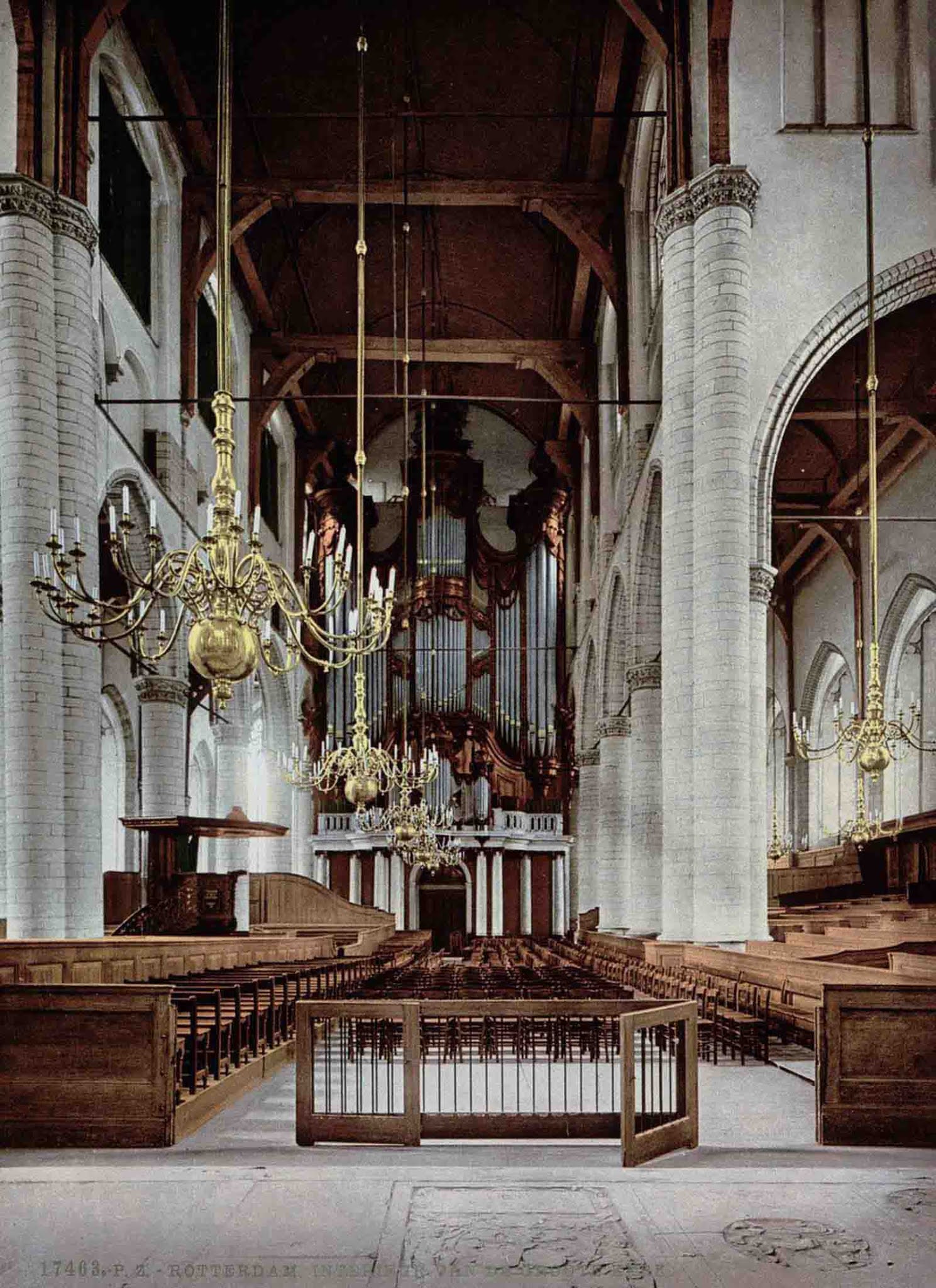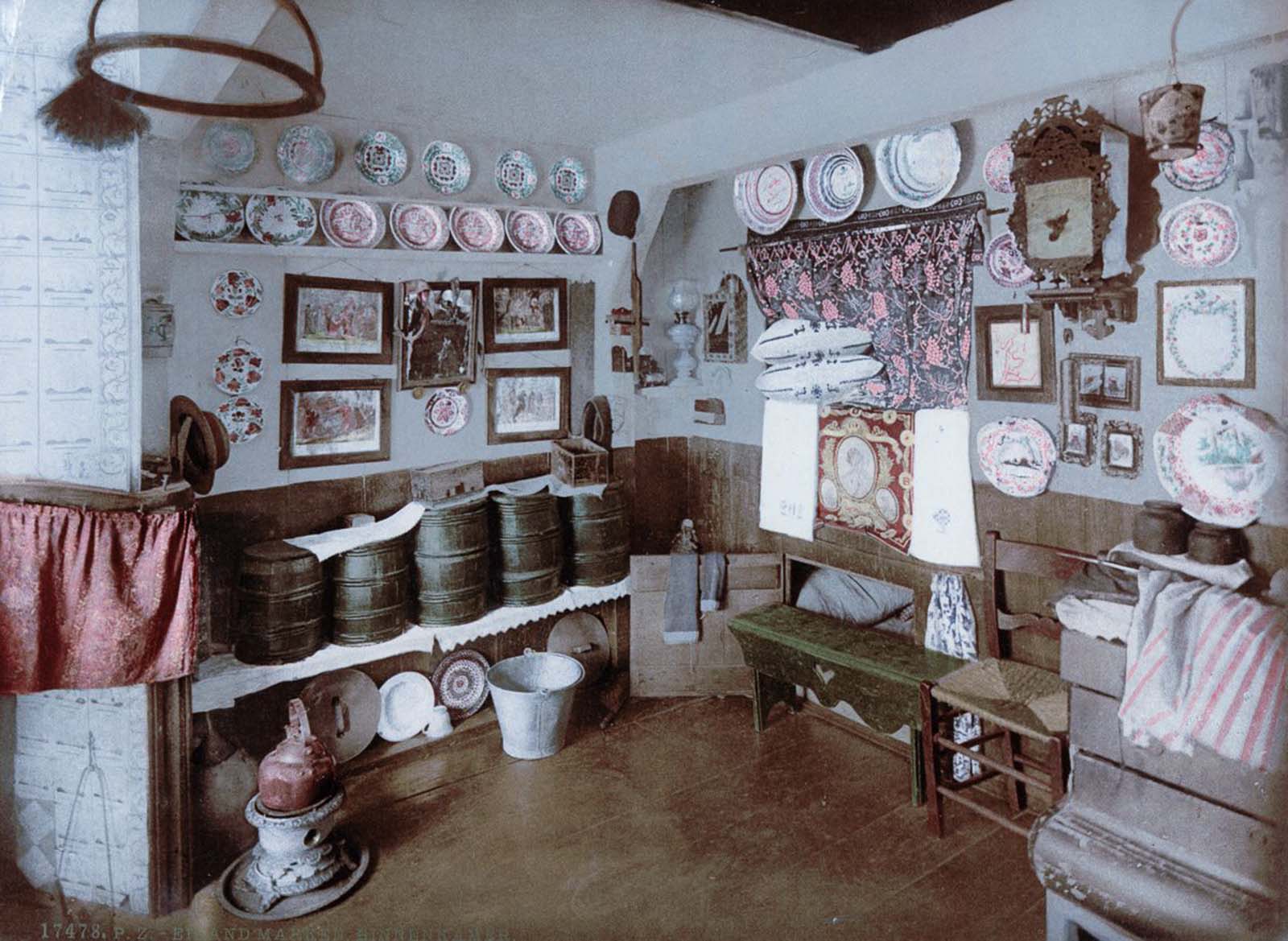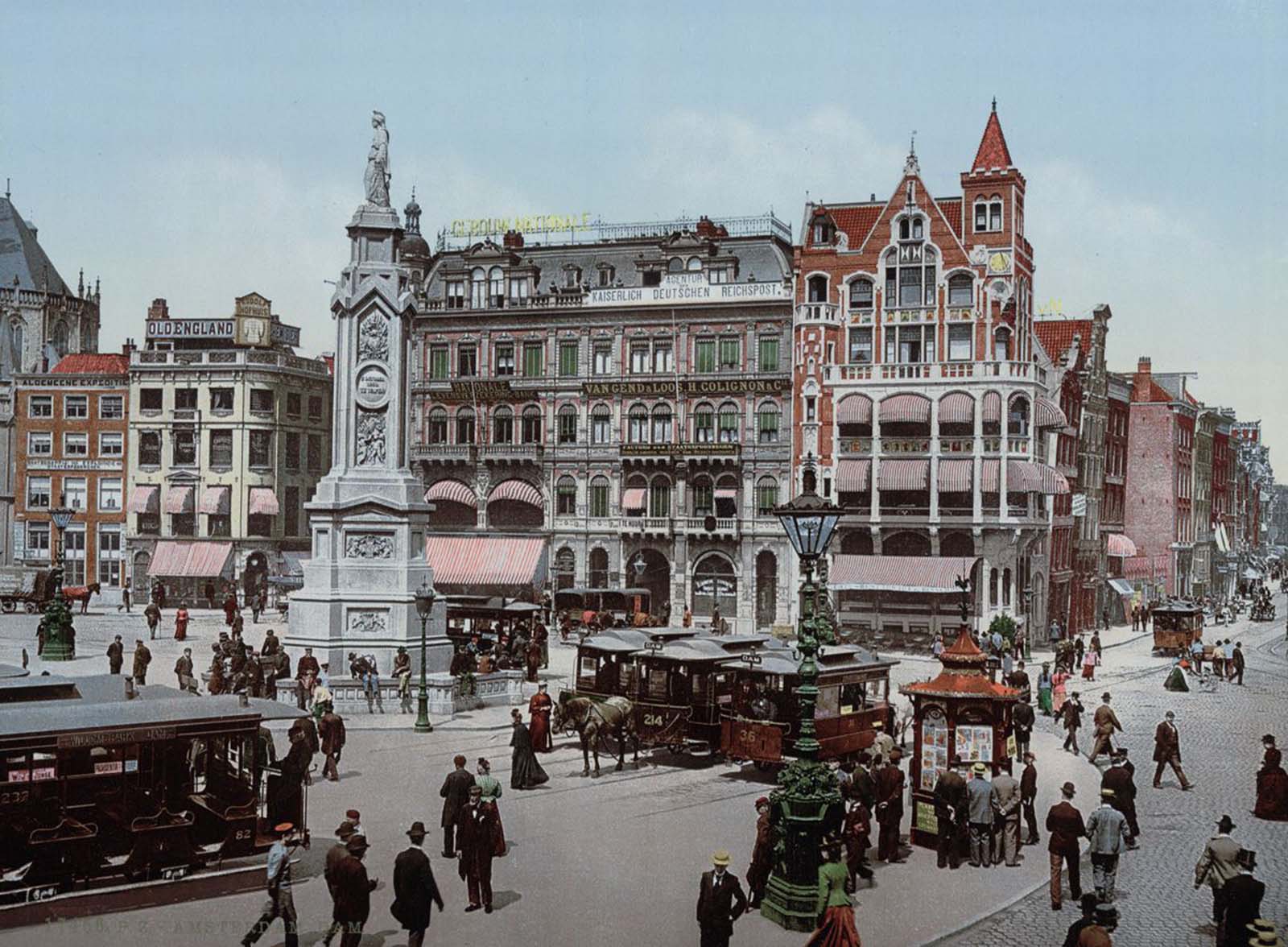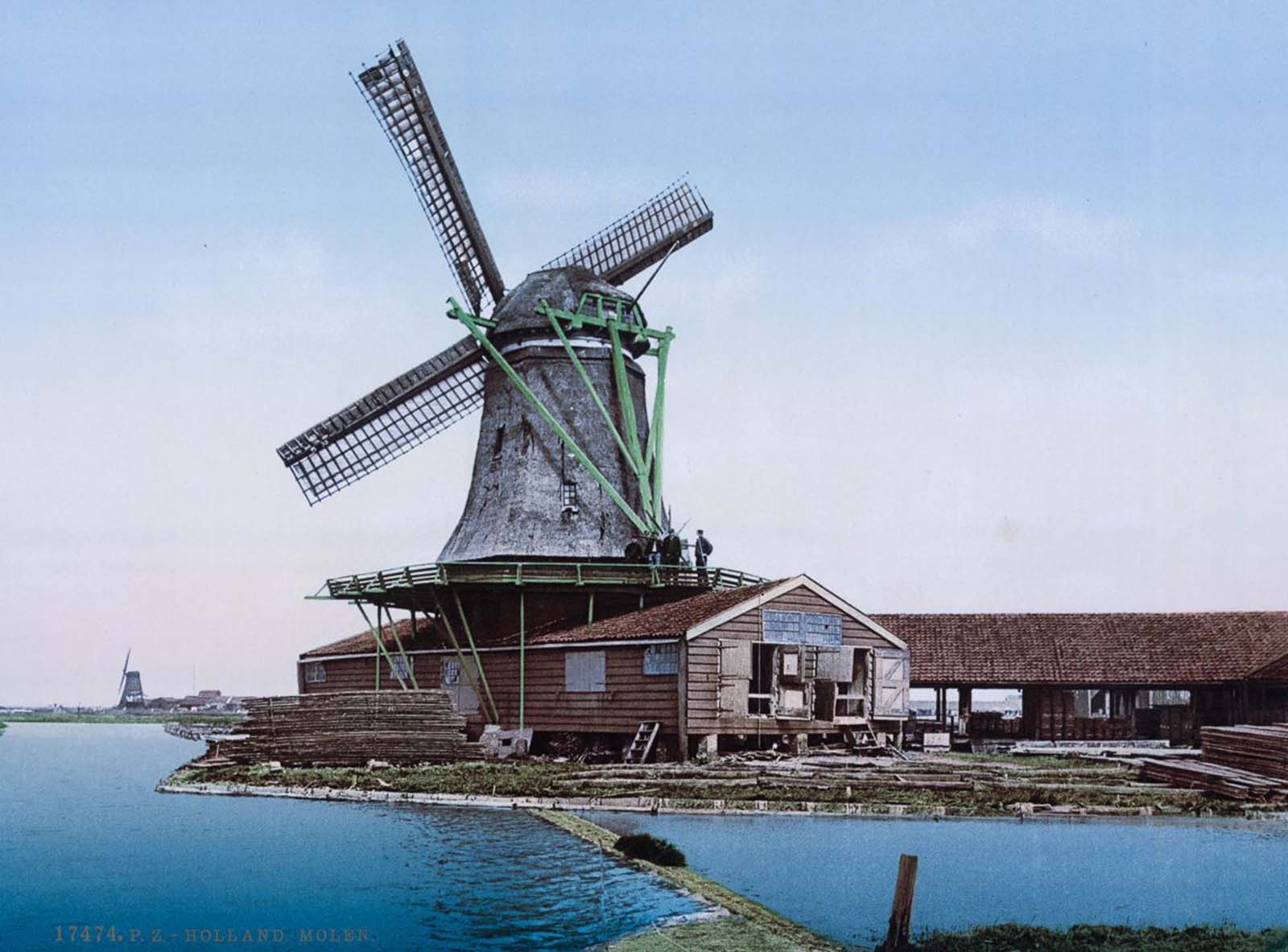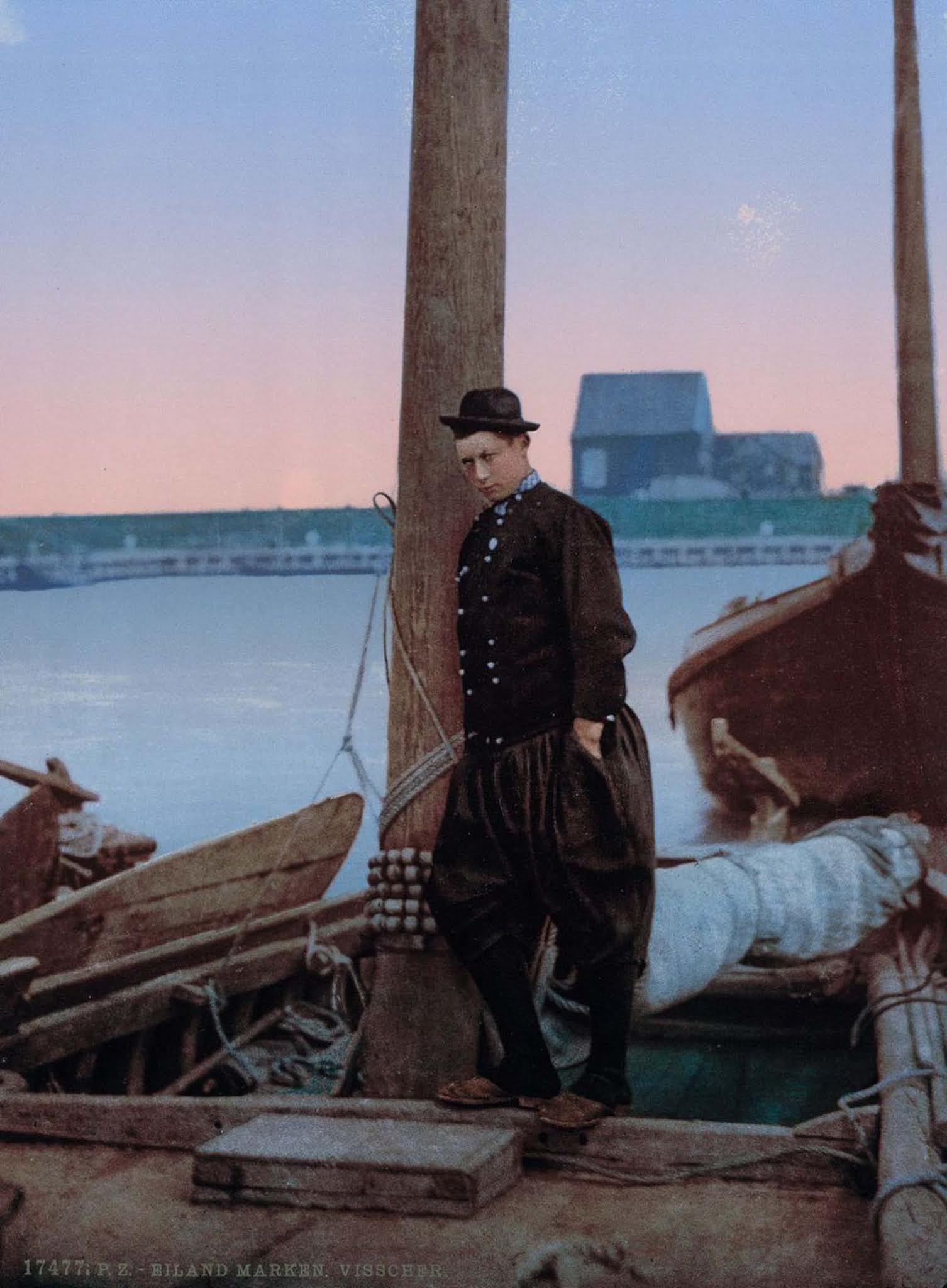This photo collection shows color images of the lifestyle, windmills, canals, cities, and countryside of the late 1890s Netherlands. The pictures are created using the Photochrom process which is a technique that applies colors on black and white images. The Netherlands did not industrialize as rapidly as Belgium after 1830, but it was prosperous enough. Historians argue that certain government policies facilitated the emergence of a national economy in the 19th century. They included the abolition of internal tariffs and guilds, a unified coinage system, modern methods of tax collection, standardized weights and measures, and the building of many roads, canals, and railroads. However, compared to Belgium, which was leading in industrialization on the Continent, the Netherlands moved slowly. Possible explanations for this difference are the higher costs due to geography and high wages and the emphasis of entrepreneurs on trade rather than industry. For example, in the Dutch coastal provinces, agricultural productivity was relatively high. Hence, industrial growth arrived relatively late – after 1860 – because incentives to move to labor-intensive industries were quite weak. However, the provinces of North Brabant and Overijssel did industrialize, and they became the most economically advanced areas of the country. As in the rest of Europe, the 19th century saw the gradual transformation of the Netherlands into a modern middle-class industrial society. The number of people employed in agriculture decreased, while the country made a strong effort to revive its stake in the highly competitive shipping and trade business. The Netherlands lagged behind Belgium until the late 19th century in industrialization and caught up around 1920. Major industries included textiles and (later) the great Philips industrial conglomerate. Rotterdam became a major shipping and manufacturing center. Poverty slowly declined as begging largely disappeared along with steadily improving working conditions for the population. The Netherlands remained one of the most tolerant countries in Europe towards religious belief, although conservative Protestants objected to the liberalization of the Dutch Reformed Church during the 19th century and faced opposition from the government when they tried to establish separate communities (Catholics and other non-Protestants were left unmolested by Dutch authorities). Some moved to the United States as a consequence, but as the century drew to a close, religious persecution had totally ceased. The late 19th century saw a cultural revival. The Hague School brought a revival of realist painting, 1860–1890. The world-famous Dutch painter was Vincent van Gogh, but he spent most of his career in France. Literature, music, architecture, and science also flourished.
(Photo credit: Library of Congress). Notify me of new posts by email.
Δ Subscribe
